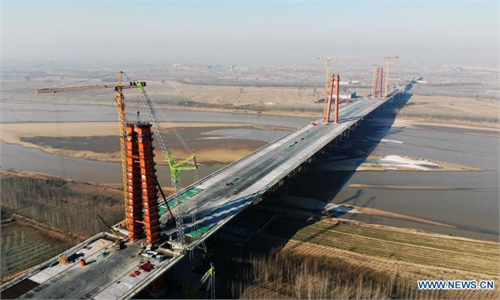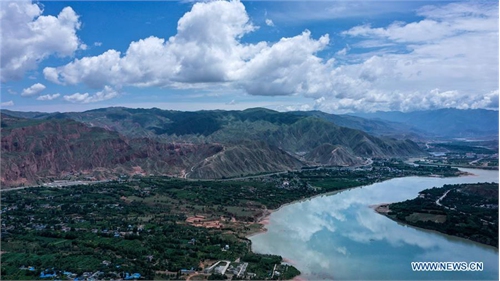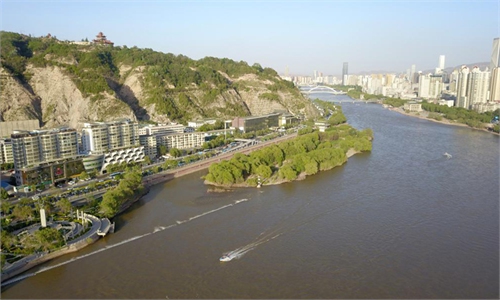Sanmenxia Yellow River Cultural Tourism Festival reveals beauty and culture along China's 'Mother River'
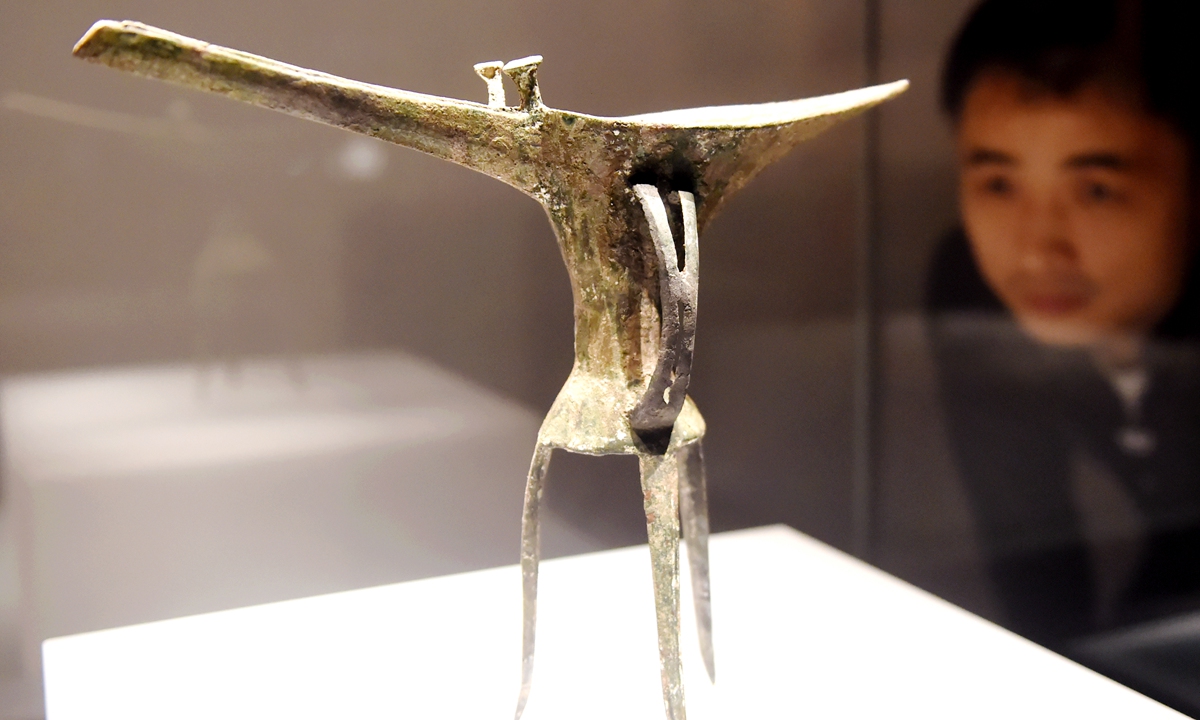
Bronze wine vessel Photo: VCG
The 27th Sanmenxia Yellow River Cultural Tourism Festival was held from Wednesday to Saturday in Sanmenxia, Central China's Henan Province. Diverse tourism attractions in nine provinces through which the Yellow River runs, including North China's Shanxi Province, Northwest China's Gansu Province and Central China's Henan Province, were introduced at the event.
The festival aimed to promote the economies of these provinces through the development of various tourism sectors, such as ecotourism, which has been on the rise in recent years.
The Yellow River, the second-longest river in the country, is also called the "Mother River of China." Many of China's earliest civilizations arose along the banks of this river, leading it to act as a cultural keystone over the past 5,000 years of Chinese history.
In September 2019, the government of Sanmenxia kicked off a project to restore the wetlands by the river and construct an ecological corridor to improve the Yellow River Basin (Sanmenxia Reach) over three years. These measures have had a positive impact on the region as now a long green corridor full of flowers runs along the 108-kilometer road that follows the Yellow River east to the Sanmenxia Dam.
While the Yellow River got its name due to the large amount of sediment carried in its waters - the buildup of which would often lead to flooding - this section of the river is now dark clear green due to the construction of reservoirs and the increase in forest and grass coverage in the basin, which has caused the sediment content of the Yellow River to decreased sharply in recent years.
Every winter, Sanmenxia's numerous wetland parks play home to a large number of white swans migrating from Siberia. These birds fly thousands of miles each year to the city to spend their winters harmoniously together with humans.
Besides natural landscapes, Henan Province is also home to rich historical and cultural heritages. Diverse cultural relics and ruins dating from China's first dynasty, the Xia Dynasty (c.2070-c.1600BC), to the prosperous Tang Dynasty (618-907), have been discovered throughout the province, each of which have stunned people throughout the country and even the world.
The discovery of the Erlitou Ruins was a great moment for the study of Chinese civilization's 5,000-year-history as it was identified as the location of the capital of the Xia Dynasty.
Encompassing an area of 3.75 square kilometers, the Erlitou Cultural Site is believed by many archeologists to be the ruins of the capital of the Xia Dynasty as the remains of a large palace complex were discovered there.
At the Erlitou Cultural Ruins Museum, one key highlight of the collections is a bronze jue (wine vessel). Often used during special religious ceremonies, jue, such as the one on display at the museum, has two small nail-like protrusions in front of the spout from which the wine was poured. It is believed that ancient Chinese would hang a small bit of cloth from these protrusions to act as a net to filter out any dross in ancient Chinese wine.
A very tiny sculpture of a monkey (2.2 centimeters tall) made from bone is another precious item in the museum's collection. The bone monkey was originally discovered by the neck of a child in a Xia Dynasty grave and is believed to have been part of a necklace.
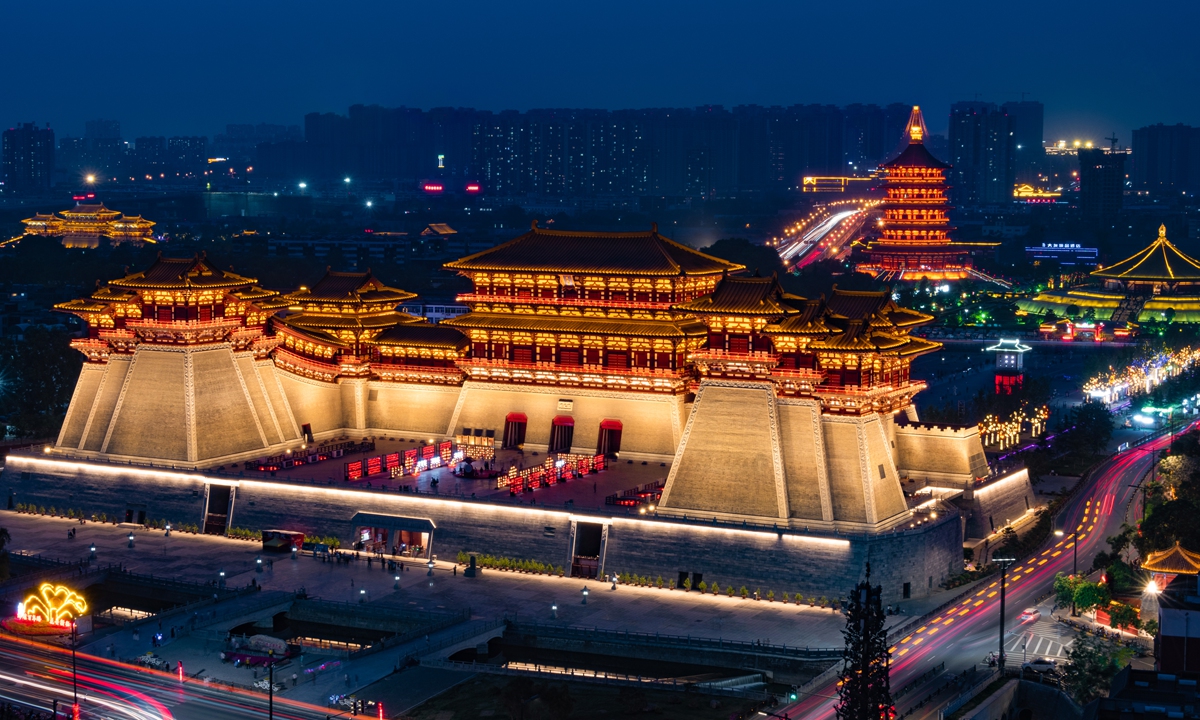
Yingtian Gate in Luoyang Photo: VCG
The city of Luoyang in Henan Province was once the capital city of 13 Chinese dynasties. Besides the Xia Dynasty, people take delight in talking about the Tang Dynasty's Wu Zetian, China's first one and only female emperor.
Although the palace that Wu called home was lost to time, the local government is trying to restore parts of the grand complex that once stood in the city. For instance, the Yingtian Gate, the palace's largest gate, has been rebuilt upon the ruins of the original gate.

Dikengyuan in Central China's Henan Province Photo: VCG
Royal culture is definitely an attractive tourist draw, but the wisdom of ordinary people also has its charm.
Dikengyuan is an example of this wisdom. This quadrangle courtyard dwelling is a unique type of folk residence as it was built underground without the use of a single brick or tile.
Local residents dug deep pits and built small wooden homes at the bottom. The advantage of these underground dwellings was that they stayed cool in the summer and warm in the winter and were also earthquake proof.
"Henan aims to build itself into a tourism destination with international influence and an important window to explore and experience China's Yellow River culture. We hope to write a new chapter in the story of Yellow River cultural tourism's high-quality development together with other provinces," Huang Dongsheng, deputy secretary general of the Henan provincial government, said at the event.

